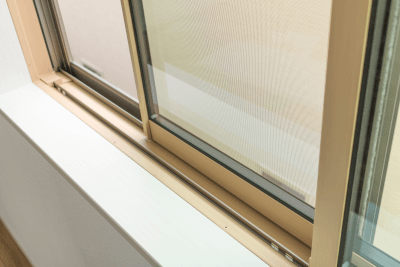What Are Aluminum Profiles?

Aluminum profiles are materials made from aluminum alloys that are designed for use as structural components in machinery and equipment. These profiles often have a hollow, four-sided shape with grooves or other features, allowing for easy connection through screws, welding, or other methods. This design facilitates the creation of lightweight yet robust structures capable of handling significant loads.
Thanks to their ease of processing and low density, aluminum alloys are widely used across various fields. In everyday applications, aluminum profiles serve as frames for screen and storm doors, offering benefits such as light weight, ease of handling, and simple disassembly.
Applications of Aluminum Profiles
Aluminum profiles find extensive use in industrial settings, including machine racks, storage racks, and steps. They are also integral to constructing room frames for safety fences within factories or for enclosing and partitioning equipment.
For industrial machinery, aluminum profiles enable the customization of frames and conveyor paths to fit specific installation sites, simplifying the creation of tailored solutions.
Design Principles of Aluminum Profiles
Aluminum profiles boast a flexible and lightweight design, simplifying the assembly of structures. Their hollow quadrilateral shape, complemented by grooves and other configurations, optimizes weight without compromising strength. The structural integrity is influenced by the material’s Young’s modulus and the profile’s shape. Although aluminum alloys have a Young’s modulus roughly one-third that of steel, their density is also about one-third, allowing for structures that are both lighter and comparably strong.
Many aluminum profiles are equipped with user-friendly nuts and easy-to-install brackets, enhancing their convenience. These profiles, typically made from 6000 series aluminum alloys like A6N01S-T5 and A6063S-T5, are valued for their corrosion resistance and weldability.
Understanding the Strength of Aluminum Structural Profiles
Types of Strength in Aluminum Frames
Aluminum structural materials are increasingly recognized as viable alternatives to steel, available from home improvement stores and online retailers. It’s crucial to understand the distinctions in aluminum frame strength, categorized into single strength and box strength to ensure their safe and effective use.
1. Single Strength
This refers to the load-bearing capacity of an individual aluminum frame, such as that of a clothesline. The allowable load is determined by the frame’s deflection, which is the extent of bending under a central load. Manufacturers typically recommend a maximum load that causes no more than 1/1,000 of the frame’s length in deflection. For instance, a 1-meter clothesline can safely support a deflection of up to 1 mm. Exceeding the recommended load may not cause immediate damage but can compromise long-term durability.
Limit load represents the breaking point of an aluminum frame, a value that varies significantly based on the frame’s dimensions. The size and length of the frame affect both deflection and limit load, with longer or smaller frames showing greater variability in these metrics.
2. Box Strength
Contrary to single strength, box strength measures the load a structure can bear when aluminum frames are assembled into a box-like configuration, such as a rack or shelf. This type of structure generally offers higher strength since the load is distributed across the entire assembly.
Box strength calculations consider deflection and a safety factor to account for the risk of fracture, with a recommended safety factor usually between 4 to 5. The strength is defined by the maximum load that can be supported with a deflection of 1/1,000 the length of the frame, facilitating easy selection of suitable frames based on specific requirements.